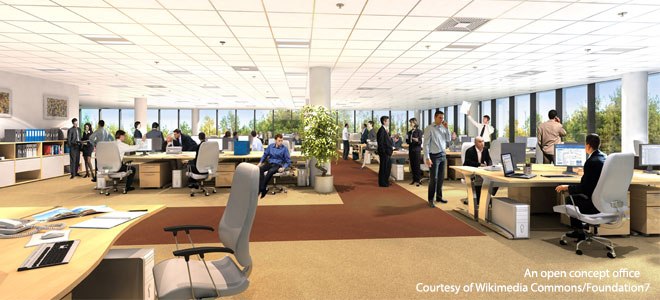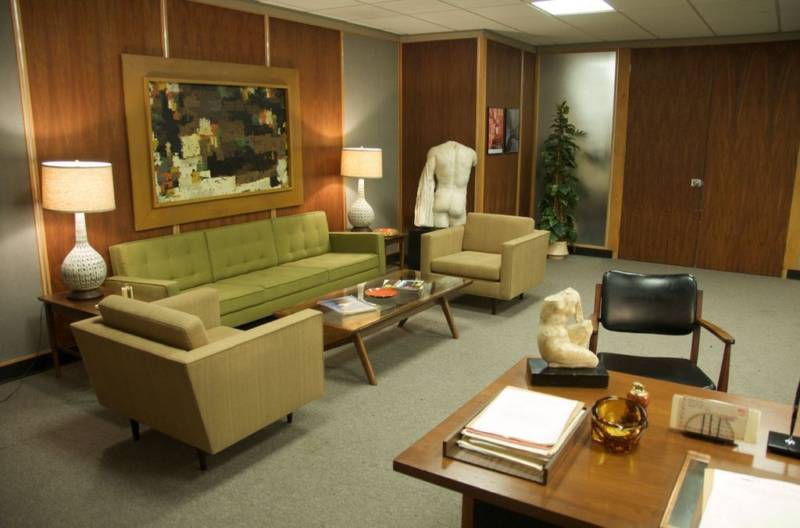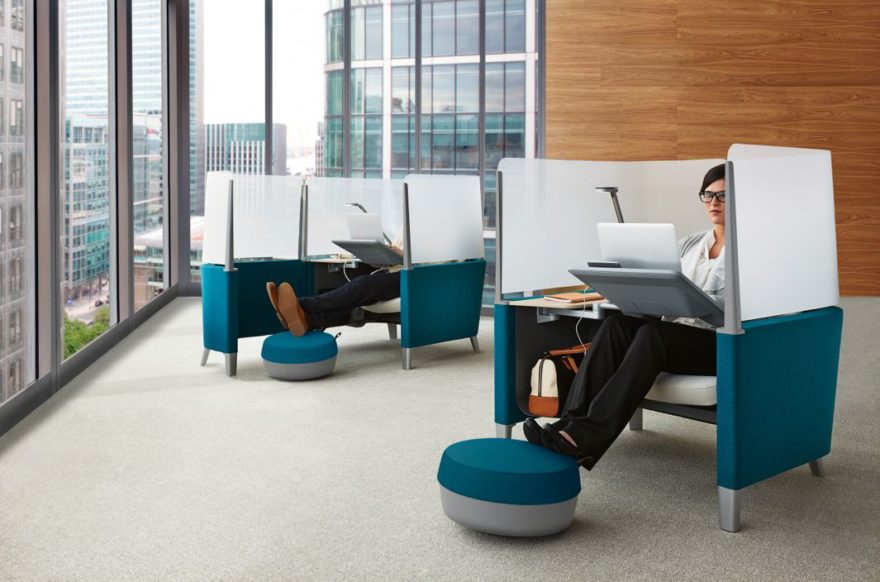 Studying the design of workplaces comes from focusing on the methods of the business, nature of the business, various practices and work of the business…and then there’s the actual look at the individual’s who make up the work team and how best they perform their work in any given business environment.
Studying the design of workplaces comes from focusing on the methods of the business, nature of the business, various practices and work of the business…and then there’s the actual look at the individual’s who make up the work team and how best they perform their work in any given business environment.
It is NOT a cookie cutter process. I have been watching the morph of open-office design. Mid-century modern approaches adopted these grand, open landscape layouts and then the pendulum swung and private offices were the thing to attract employees. We’ve seen Mad Men replicate this era and it prompted a sexy nostalgia for social scene depicted as the workplace norm. 
The era and advantages provided by the privacy in those private offices…..
Attracting employees is an art unto itself. Extracting their productivity, once you have them is next. But what is certain as the pendulum swings again is that what has been in recent years the seeming popularity of the open, group work areas, the lack of privacy intended to generate collaborative productivity. And inasmuch as there are bonafide circumstances and business environments which nurture and benefit from this design approach, the pendulum left so many business practices and employees out of the equation for success.
At the start of 2012 Susan Cane wrote a book titled QUIET. It discusses her observations and interpretations of introverts versus extroverts. It address many aspects of what this distinction is all about and the environments that encourage and those that intimidate or hamper productivity. These observations addressed personal issues such as self esteem as part of the recipe for success. But this blog is concerned with the reasons for certain physical design approaches in the workplace.
The emphasis has seemed to be upon pitting the opposing personalities against each other and directly or indirectly favoring the bold and unreserved extrovert over the meek and quiet introvert but it is not about that, the real design picture and life picture should be greater than that as there are many personality types that make-up an effective workforce.
Steelcase has identified a Privacy Crisis. They have performed studies to better understand the design of the workplace in its many iterations. I recently took a continuing education class addressing this very point and it was so interesting to apply recent observations in my own collection of design projects presenting some of these very issues. A credit to Steelcase for bringing this to the fore but funny how the pendulum has swung once again. True that as one of the leaders in office and specifically systems furniture, they have had ulterior motives in studying what the next “trend” will be.

Semi-privacy….work…study??? Cost.
It’s good business to create things that will attract buyers and users but I found that some of the cool little pods that are new to their collection are more fun than practical and the rationalizing by the sales staff is often humorous in their attempt to make it relevant, desirable, and necessary.
I do like the idea when design has a good functional function – and yet I am frivolous enough to LOVE design for design’s sake…but when it is SUPPOSSED to function – it makes me crazy when it is primarily if not entirely frivolous!!!! Get that? Now the BEST is frivolous that REALLY FUNCTIONS…ponder those examples…I will after I finish this!!!
I regress…my point here is to recognize the need to establish the balance between the collaborative design of an open team-thinking workplace with the need for privacy to focus, regroup and refresh. And in the case of certain very productive individuals, just get their work done.
I have two examples that in my own practice brought these issues to the design table. One was an accounting firm where conversations with clients about their financial dealings warranted privacy. Having a client later walk through the office and realize that some of their own conversations might have occurred in open areas where privacy was not respected would be a poor business decision and poor business practice. The second example was similarly based around client’s financial planning and preferences at a non-profit organization. An open area where discussions of an intimate and personal nature might take place would not be appropriate. Although at first glance the attraction of a common area where employees could enjoy each other’s camaraderie and interaction, it did not benefit their productivity nor did it benefit the end result which was the confidentiality of the client’s financial planning.
So, sometimes it is the nature of the work to be done. Sometimes it is the enhancement and facility of the team effort. Sometimes it is the style of the employee doing the work and their best environment for productivity. In the last instance for individual’s personal style of private productivity there are many considerations of interfering distractions… whether it be noise – some enhances the working environment and other distracts terribly – or movement and peripheral activity, distractions come in many forms.
Good design will always be sensitive…sensitive to the object of the design (client and sub-clients as in employees), context of neighboring elements, applicability and efficacy of the design for its intended purpose.
One thing Susan Cain said stands out, “The secret to life is to put yourself in the right lighting.”



This is a great article Patti. Perhaps you could sell publicity for the furniture industry. You do a very good job.
http://www.leondelavega.com http://www.estudio-cafe.com
2016-07-31 12:58 GMT-05:00 Patti Says… :
> pattisays posted: “Studying the design of workplaces comes from focusing > on the methods of the business, nature of the business, various practices > and work of the business…and then there’s the actual look at the > individual’s who make up the work team and how best they pe” >
Hi Patti,
This was interesting to me since I’m looking at it from an “old school” perspective. Also because I’ve been hearing commercials for a new executive office located near Central & San Mateo — maybe in the old bank building. I wonder how they’re set up. Seems to me privacy is very important when one actually wants to get some work done. Plus conference rooms for larger meetings of staff/clients. Am I out of step??? My little secretarial service was primarily typing/word processing, but also included executive suites. And I even wanted a room for exercise (rented by the hour) by other people in the building). Luckily I didn’t proceed with that before someone broke their neck and sued.
Keep in mind Charles Dibrell’s August Social at the Veterans Memorial Park, 1:00-3:00 p.m. on Aug. 24. I can’t pick Betsy up since I’m involved in set-up but have missed seeing you.
Gail